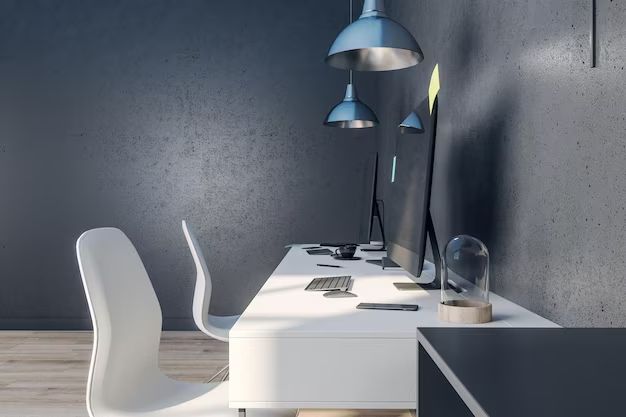When setting up a home office, proper lighting is essential for productivity and eye comfort. With so many lighting options available, it can be overwhelming to choose the right fixture. Here are some key considerations when selecting lighting for your home office.
Page Contents
How Much Light Do You Need?
The first step is determining how much illumination your workspace requires. Experts recommend a minimum of 30-50 footcandles for typical computer and desk work. However, tasks like reading small text or intricate work may need up to 70-100 footcandles. Measure the length and width of your office to calculate the required lumens using an online calculator. This will give you an estimate of the necessary brightness. Also consider ambient light from windows and other existing fixtures when deciding.
Lighting for Computer Screens
Proper lighting around computer screens is crucial to reduce eyestrain and headaches from working. Here are some tips:
- Position task lighting beside monitors to provide direct illumination without glare.
- Use diffused or indirect light to avoid reflections on screens.
- Ensure the monitor is perpendicular to windows to minimize glare.
- Consider monitor position when planning light layout to avoid shadows.
- Use screens with matte finishes to diffuse reflections.
Types of Office Lighting
There are several common lighting fixture types to consider for home offices:
Pendant Lights
Pendant lights hang from the ceiling and take up minimal desk space. They cast both ambient and task lighting. Look for adjustable height and directional shades to focus light where needed. Pendants work well over office seating areas.
Table and Floor Lamps
Flexible table and floor lamps can provide task lighting beside your workspace. Look for adjustable arms to position the light source close to work areas without glare. Floor lamps are ideal for offices without much ceiling space.
Recessed/Ceiling Lights
Recessed downlights provide excellent ambient illumination. LED panels create bright, even overhead lighting ideal for offices. Some recessed lights feature adjustable heads for directional task lighting.
Track Lighting
Track fixtures allow flexibility through multiple adjustable spotlights. You can focus light on specific work zones. Tracks work well in open office layouts and can be directed as needs change.
Smart Lighting Options
Smart bulbs allow you to control lighting right from your smartphone or computer. Here are some smart benefits:
- Adjust brightness and temperature
- Set schedules to mimic natural light
- Control from anywhere
- Automatically adjust with the seasons
- Integrate with other smart devices
Lighting Tips for Common Home Office Types
Tailor lighting to how you utilize the space and arrange furnishings:
Traditional Desk Setup
- Use task lighting like a desk or floor lamp beside the monitor.
- Add ambience with wall sconces or pendant fixture over the desk.
- Include a general overhead light for overall illumination.
Open Concept Office
- Suspend multiple pendant lights over the workspace.
- Use recessed lighting to evenly brighten the full area.
- Add table lamps near seating/reading nooks.
Compact Corner Office
- Place a floor lamp next to the desk in the corner.
- Mount sconces or track lights overhead for directional lighting.
- Use mirrors and light colors to brighten a smaller workspace.
Choosing the Right Bulb
The bulb you choose impacts light quality, energy efficiency, and longevity. Here are some common options:
| Bulb | Characteristics |
|---|---|
| LED | Lasts up to 50,000 hours. Very energy efficient. Dimmable. Harsh light at times. |
| CFL | Last 10,000 hours. Energy saving. Contains mercury. Most not dimmable. |
| Incandescent | Warm light. Low upfront cost. Only lasts 1,000 hours. Not energy efficient. |
| Halogen | Bright, crisp light. Lasts 2,000-4,000 hours. Gets hot. Energy waster. |
Putting it All Together
Follow this checklist when selecting your home office lighting:
- Calculate how much illumination you need.
- Provide both ambient and task lighting.
- Match bulbs to fixtures for quality and efficiency.
- Layer multiple types of lighting.
- Use dimmers and smart controls for adjustability.
- Position fixtures to avoid screen glare.
- Focus light in work zones you use most.
Conclusion
Proper office lighting improves productivity and comfort while protecting your eyesight. Determine how much light your tasks require and provide layers of adjustable illumination. The right mix of ambient fixtures and task lighting focused where you need it most creates an ideal home office environment. Choosing energy efficient LED bulbs in quality fixtures will provide the best light quality for years to come.
